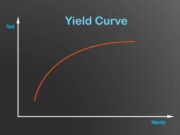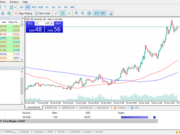
How to Calculate Variation and Maintenance Margin
In futures trading, you must provide variation margin to your broker if you want to continue trading. If you fail to provide variation margin, your broker will forcefully close your position and you will lose money. The maintenance margin required for each market and asset is different. The variation margin amount is the cash required to bring your account back up to its original margin level. This amount must be provided in a timely manner to avoid losing your entire account. Here are some helpful tips to calculate variation margin.
Maintenance margin is a factor in calculating variation margin
Using a varying margin to make a trade requires a certain amount of liquid funds. This amount is known as the variation margin. Essentially, the variation margin serves as collateral for losses on the trades. Depending on the type of trade, it may be lower or higher than the initial margin. The maintenance margin must be at least $1,000. In a nutshell, it is the minimum amount that a trader needs to place a trade.
When determining how much variation margin to use in a trade, it is important to understand what a maintenance or initial margin is and how it relates to the calculation. In short, maintenance margin is the minimum amount an investor must maintain in a margin account when making trades. It is usually less than the amount required at the time of initial margin, but it is an important factor in determining the overall amount of margin a trader has available for trades. In order to avoid trading below maintenance margin, traders should set up their account balance with at least 25% of the total market value.
Option value is not included in the calculation of variation margin
The SPAN sign convention is the opposite of US sign convention. This is consistent with the operation of SPAN across the globe. The calculation of the variation margin for options is based on the option value as of the latest close of business on the prompt date. The total variation margin for a naked long call option is equal to the option value at its latest close of business. Generally, the SPAN sign convention is used for calculating option variation margin.
The variation margin is the amount of money required by a clearing member to maintain a given level of the margin in a margin account. It is the amount of money required by a clearing member when their funds fall below the maintenance margin. It is also known as a margin call. The clearing member pays the variation margin to the clearinghouse in response to the change in price of the futures contracts that are held by the member.
Initial margin is a factor in calculating variation margin
Initial margin is a key factor in calculating variation and maintenance levels. Variation margin, on the other hand, is used to bring the capital in an account up to a certain level. In order to maintain the margin level, liquid funds must be available. These liquid funds serve as collateral in case of a loss. Therefore, initial margin and maintenance margin work together to create an overall market value. In case of a dispute, both Covered Entities should take necessary measures to resolve the matter.
To calculate variation margin, the initial margin of an investor must be matched with the maintenance of the equity account. The maintenance margin is usually less than the initial margin required to trade stocks. It allows the investor to borrow from the brokerage and functions as collateral for the borrowed amount. The minimum maintenance margin for stocks is 25%, while other brokerages may set a higher level. A broker can use the initial margin as a guideline when calculating variation margin.
Working with a clearinghouse
A clearing member pays a clearinghouse variation margin to reduce the amount of exposure to high-risk positions. The goal of this process is to make the process of orderly payment of funds easy for all members. Clearing members also pay a minimum amount of variation margin to the clearinghouse each day. This payment ensures that the clearinghouse maintains a certain level of risk exposure and can manage the money more efficiently.
This contract strategy is elegant but precarious. Nondefaulting members risk having their variation margin gains cut or their contracts torn up. This uncertainty can be costly for members who don’t rely on the clearinghouse’s services. Without a clear understanding of the clearinghouse’s financial stability and reliability, they may decide to exit. However, this is rarely recommended. Clearinghouses must maintain their financial soundness to remain in business.


































